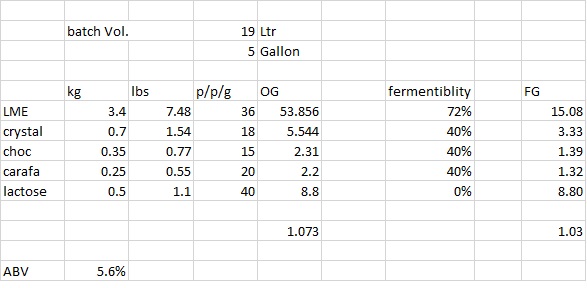So i have stout with a high FG
I'm pretty sure I have a high level of unfermentable sugar in it. I used beersmith it predicted a OG of 1.060 and FG of 1.025. my recipe is extract iincluding 1.2kg of steeped crystal and Choc grains. BS only estimates about 4p/p/g vs 16-18p/p/g that other souces suggest. It also assumes sugars from crystal malt are as fermentable and extract. combined with lactose suggests realistic FG will be low 1.030's is there any way to get this down
thanks in advance
ps If Beersmith was accurate I never would have added lactose
I'm pretty sure I have a high level of unfermentable sugar in it. I used beersmith it predicted a OG of 1.060 and FG of 1.025. my recipe is extract iincluding 1.2kg of steeped crystal and Choc grains. BS only estimates about 4p/p/g vs 16-18p/p/g that other souces suggest. It also assumes sugars from crystal malt are as fermentable and extract. combined with lactose suggests realistic FG will be low 1.030's is there any way to get this down
thanks in advance
ps If Beersmith was accurate I never would have added lactose
























![Craft A Brew - Safale BE-256 Yeast - Fermentis - Belgian Ale Dry Yeast - For Belgian & Strong Ales - Ingredients for Home Brewing - Beer Making Supplies - [3 Pack]](https://m.media-amazon.com/images/I/51bcKEwQmWL._SL500_.jpg)
























